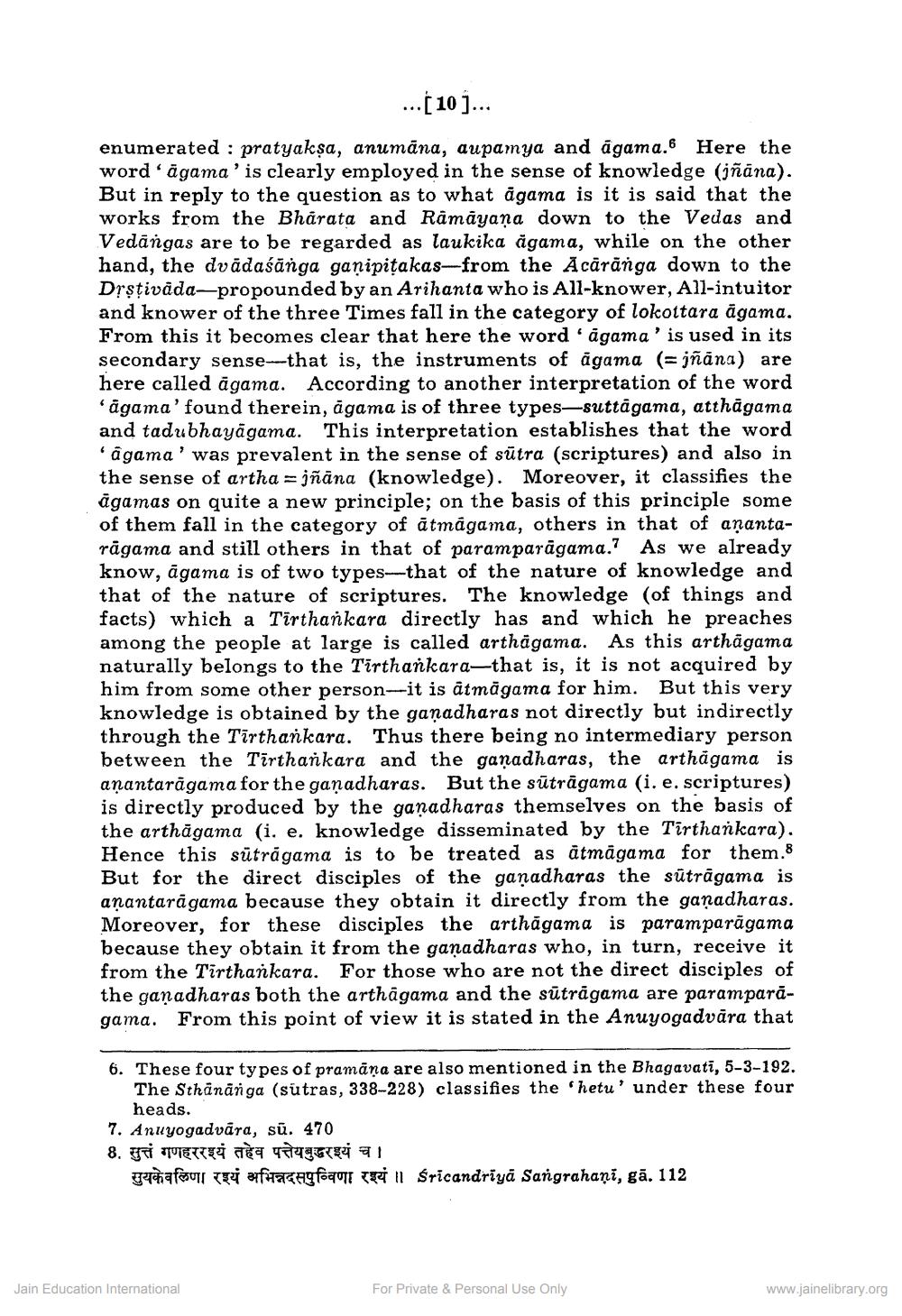________________
...[10]...
enumerated: pratyakṣa, anumana, aupamya and agama.6 Here the word agama' is clearly employed in the sense of knowledge (jñāna). But in reply to the question as to what agama is it is said that the works from the Bharata and Rāmāyaṇa down to the Vedas and Vedāngas are to be regarded as laukika agama, while on the other hand, the dvadaśānga gaṇipiṭakas-from the Acaränga down to the Dṛṣṭivada-propounded by an Arihanta who is All-knower, All-intuitor and knower of the three Times fall in the category of lokottara agama. From this it becomes clear that here the word agama' is used in its secondary sense-that is, the instruments of agama (=jñāna) are here called agama. According to another interpretation of the word 'agama' found therein, agama is of three types-suttagama, atthāgama and tadubhayagama. This interpretation establishes that the word 'âgama' was prevalent in the sense of sutra (scriptures) and also in the sense of artha = jñāna (knowledge). Moreover, it classifies the agamas on quite a new principle; on the basis of this principle some of them fall in the category of atmagama, others in that of aṇantaragama and still others in that of paramparāgama. As we already know, agama is of two types-that of the nature of knowledge and that of the nature of scriptures. The knowledge (of things and facts) which a Tirthankara directly has and which he preaches among the people at large is called arthagama. As this arthagama naturally belongs to the Tirthankara-that is, it is not acquired by him from some other person-it is ātmāgama for him. But this very knowledge is obtained by the ganadharas not directly but indirectly through the Tirthankara. Thus there being no intermediary person between the Tirthankara and the ganadharas, the arthagama is anantaragama for the ganadharas. But the sutragama (i. e. scriptures) is directly produced by the ganadharas themselves on the basis of the arthagama (i. e. knowledge disseminated by the Tirthankara). Hence this sūtrāgama is to be treated as ātmāgama for them.8 But for the direct disciples of the ganadharas the sūtrāgama is anantaragama because they obtain it directly from the ganadharas. Moreover, for these disciples the arthagama is paramparāgama because they obtain it from the ganadharas who, in turn, receive it from the Tirthankara. For those who are not the direct disciples of the ganadharas both the arthagama and the sūtrāgama are paramparăgama. From this point of view it is stated in the Anuyogadvāra that
6. These four types of pramana are also mentioned in the Bhagavati, 5-3-192. The Sthānanga (sutras, 338-228) classifies the 'hetu' under these four heads.
7. Anuyogadvāra, sū. 470
8. सुत्तं गणहररश्यं तहेव पत्तेयबुद्धरइयं च ।
सुकेवलिणारइयं अभिन्नदसपुव्विणा रश्यं || Sricandriyā Sangrahani, gā. 112
Jain Education International
For Private & Personal Use Only
www.jainelibrary.org




